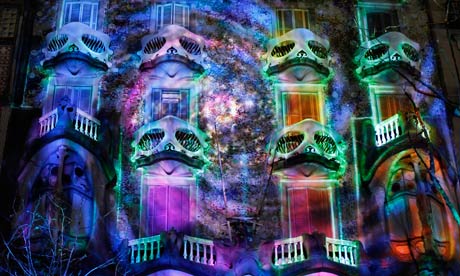
On 7 June 1926 a shabbily dressed old man was knocked down on a busy road in Barcelona. Assumed to be homeless, he was given second-rate medical treatment. Finally, as he lay dying in hospital, the great architect Antoni Gaudí was recognised.
The manner of Gaudí's death encapsulated the mystery of a man who never quite seemed to fit his time. This is his birthday (he was born on 25 June 1852) and he has been honoured by a Google Doodle. He is famous, but is he any more understood than he was in 1926?
For Gaudí is an anachronistic genius – a modernist giant who was addicted to the past. His buildings are at once futuristic and backward-looking. Fantastical intruders in their day, they now have a timeless quality that makes them profoundly pleasurable. Where other modern buildings proclaim their century proudly, his could equally well come from medieval Africa or 25th-century Mars. He was mocked by Picasso for being old-fashioned, and by George Orwell for building modern monstrosities.
In fact Gaudí had a lot in common with the British critic John Ruskin whose book The Stones of Venice champions the idea that gothic architecture is more communally enriching than the ugly edifices of the commercial age. Gaudí's visionary buildings offer a utopian gothic alternative to the businesslike city around them. The most renowned are in Barcelona, decorating its streets like mad jewels.
Gaudí's most beautiful creation is the Casa Batllo. It has a drop-dead facade, a complex confection of skeletal columns framing wavy windows that do much more than connect house and street. Passing through it feels like entering another realm. A good analogy is the overture of an opera by Wagner, for like a Wagnerian performance, the Casa Batllo is a total work of art that absorbs and consumes you. The grandiose facade leads the visitor into another reality – and the interior lives up to that sense of wonder. Deep colours, organically orotund spaces, and sinuous wood carvings lead you from room to room as if wandering through an undersea palace.
The roof is a fairytale sculpture, laden with mosaics. This enchanted realm high above the city is mirrored by the public spaces of Park Guell, where glittering mosaic salamanders, multicoloured seats and subterranean terraces create a dream that restores and liberates everyone who goes there.
Gaudí died alone but his art – including the still-unfinished Sagrada Familia, his attempt to recreate the age of the cathedral – is for all. He is shared and loved, as he deserves to be. His vision humanises the modern city.

